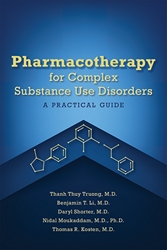Clinical Manual of Drug Interaction Principles for Medical Practice
View Pricing
Description
Drug interactions have become a significant iatrogenic complication, with as many as 5% of hospitalizations and 7,000 deaths annually attributable to drug-drug interactions in the United States. There are several reasons these numbers have increased. First, many new medications have been brought to market in recent years. Second, advances in medical care have resulted in increased longevity and more elderly patients than ever before—patients who are more likely to be following polypharmacy regimens. Population patterns in the U.S. have amplified this trend, with aging baby boomers swelling the patient pool and demanding treatment with medications advertised on television and in print.
Fortunately, drug interactions can be prevented with access to current, comprehensive, reliable information, and the Clinical Manual of Drug Interaction Principles for Medical Practice provides just that in a user-friendly format psychiatry clinicians (including residents and nurses) and forensics experts will find indispensable. With this new edition, the book has evolved from Concise Guide to Clinical Manual and offers the expanded coverage and features healthcare providers need to keep up with this critical field.
The book is well organized, with major sections on metabolism; cytochrome P450 enzymes; drug interactions by medical specialty; and practical matters, such as the medicolegal implications of drug-drug interactions and how to retrieve and review the literature. In the section on P450 enzymes, each chapter addresses what the individual enzyme does and where, its polymorphisms, and drugs that inhibit or induce activity. Each chapter also includes extensive references and study cases to help the reader understand and contextualize the information. A number of additional features enhance the book's scope and utility:
- The book boasts the very latest information in the area of drug metabolism, transport, and interaction.
- The chapter on P-glycoprotein (a drug transporter) was expanded from the last edition to include a broader array of transport mechanisms.
- The highest ethical standard was adhered to in the development of this volume, which was not supported in any way by pharmaceutical makers or distributors.
All eight contributors to this excellent resource are experts in the fields they have addressed, and clinicians can trust that the information contained in the Manual reflects the very latest research. This exceptionally practical manual is essential to maintaining the highest standard of care.
Contents
- Contributors
- Preface
- Acknowledgments
- PART I: Introduction and Basic Pharmacology of Metabolic Drug Interactions
- Chapter 1. Introduction to Drug Interactions and to This Clinical Manual
- Chapter 2. Definitions and Phase I Metabolism
- Chapter 3. Metabolism in Depth: Phase II
- Chapter 4. Transporters
- PART II: P450 Enzymes
- Introduction to Part II
- Chapter 5. 2D6
- Chapter 6. 3A4
- Chapter 7. 1A2
- Chapter 8. 2C9
- Chapter 9. 2C19
- Chapter 10. 2E1
- Chapter 11. 2A6, 2B6, and 2C8
- PART III: Drug Interactions by Medical Specialty
- Chapter 12. Gynecology: Oral Contraceptives
- Chapter 13. Internal Medicine
- Chapter 14. Infectious Diseases
- Chapter 15. Neurology
- Chapter 16. Oncology
- Chapter 17. Pain Management I: Nonnarcotic Analgesics
- Chapter 18. Pain Management II: Narcotic Analgesics
- Chapter 19. Psychiatry
- Chapter 20. Transplant Surgery and Rheumatology: Immunosuppressants
- PART IV: Practical Matters
- Chapter 21. Guidelines
- Chapter 22. Medicolegal Implications of Drug-Drug Interactions
- Chapter 23. How to Retrieve and Review the Literature
- Appendix: Tables of Drug Interaction Pharmacokinetics
- Index
About the Authors
Gary H. Wynn, M.D., is Staff Psychiatrist at the Walter Reed Army Medical Center, in Washington, D.C., and Assistant Professor, Uniformed Services University School of Medicine in Bethesda, Maryland.
Jessica R. Oesterheld, M.D., is Acting Director of the Spurwink Department of Psychiatry, at the Maine Medical Center, and Clinical Associate Professor at the University of Vermont College of Medicine in Burlington, Vermont.
Kelly L. Cozza, M.D., FAPM, FAPA, is Associate Professor at Uniformed Services University School of Medicine in Bethesda, Maryland, and Consultant in the Department of Psychiatry at Walter Reed Army Medical Center in Washington, D.C.
Scott C. Armstrong, M.D., DFAPA, FAPM, is Medical Director of Tuality Center for Geriatric Psychiatry, and Associate Clinical Professor of Psychiatry at Oregon Health and Science University in Forest Grove, Oregon.
Related Products
Carousel Control - items will scroll by tabbing through them, otherwise arrows can be used to scroll one item at a time








